| Adineta barbata: a bdelloid rotifer very common in moss and humus soil samples. Adineta is characterized by a specific movement: the head slides more or less continuously across the substrate, while the foot and the body move and contract. (2) |
| |
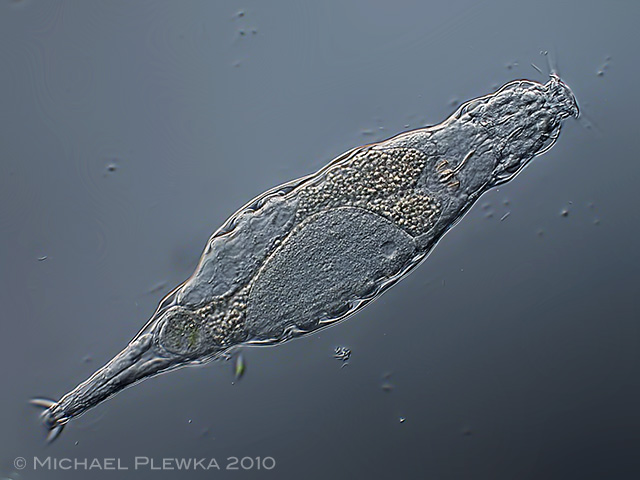 |
| Adineta barbata: specimen from (2) |
| |
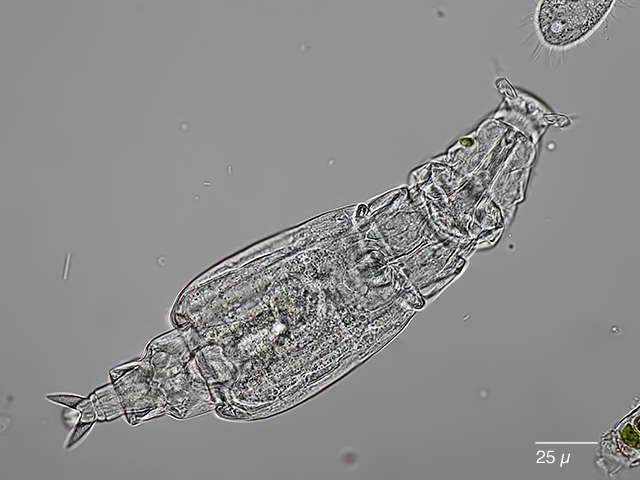 |
| Adineta barbata: the rostrum is very long, the margins are parallel-side (see also image below) (Hattingen Oberstueter, forest, moss on tree, together with Adineta steineri . 24.02.2013) |
| |
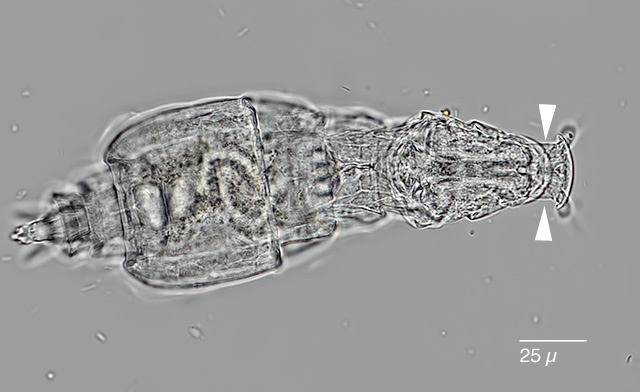 |
| Adineta barbata: another specimen from the same sample. The arrowheads point to the parallel rims of the rostrum. |
| |
|
|
| Adineta barbata, in contrast to Adineta steineri the rostrum has several long bristles on each side. (2) |
| |
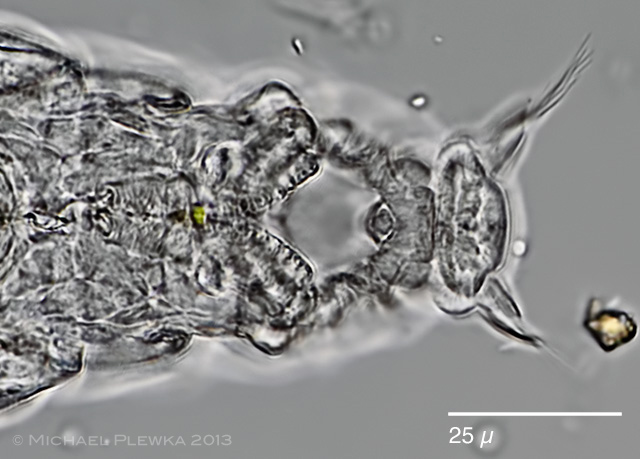 |
| Adineta barbata, rostrum with bristles (2). The rostrum lamella is folded around the bristles. |
| |
|
| Adineta barbata, specimen from (4), 4 aspects of the head, different focus planes. Lower left: focus plane on the ciliary field and rake apparatus, which has 8 U-hooks in each rake (NoUH: 8/8) , which is in contrast to Adineta steineri with number of U.hooks (NoUH): 9/9 |
| |
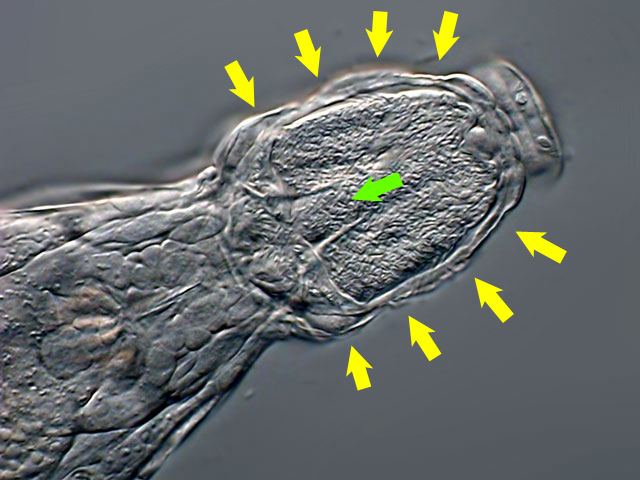 |
| Adineta barbata: the diet is transported towards the mouth (green arrow) by the cilia and then goes into the mastax. The fringe of the ciliated field acts like a curtain and may be contracted thus hiding the ciliated field. (3) |
| |
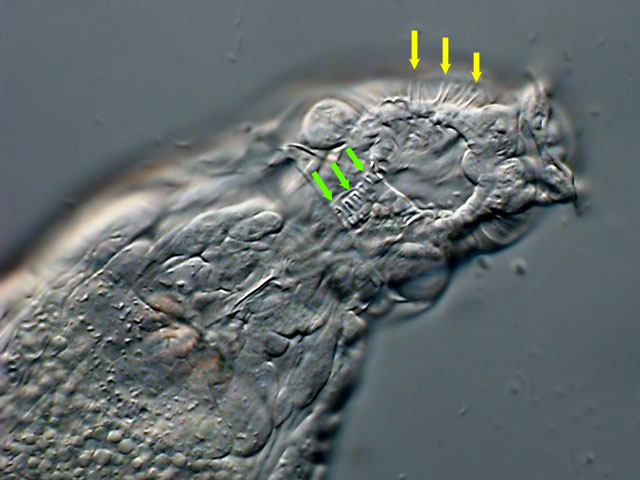 |
| A. barbata: focal plane on the teeth of the "hook apparatus" (green arrows). Yellow arrows indicate fibers that may open the "curtain). (3) |
| |
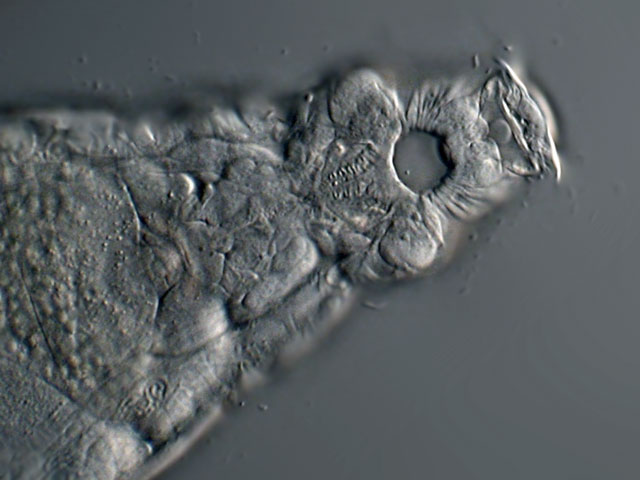 |
| Adineta barbata:curtain closed to minimum (3) |
| |
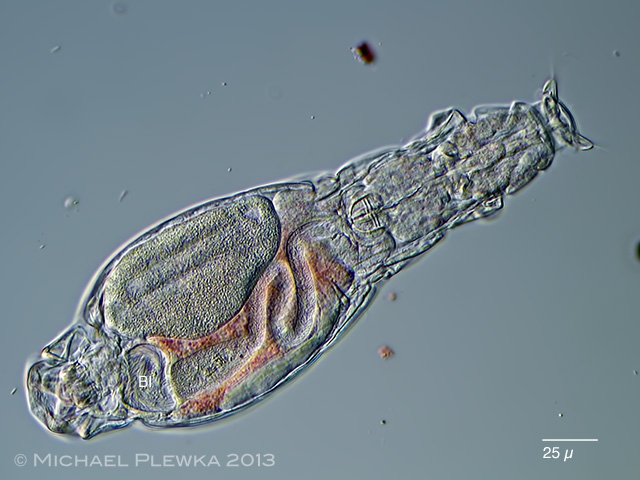 |
| Adineta barbata: focal plane on the ciliated stomach lumen which ends in the bladder (Bl). (3) |
 |
| Adineta barbata: crop of the above image (3) |
| |
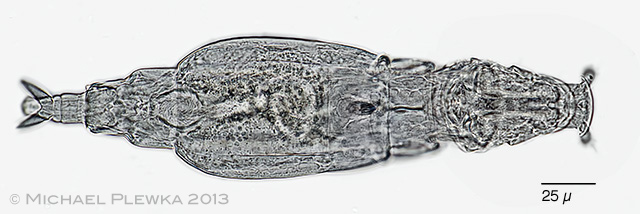 |
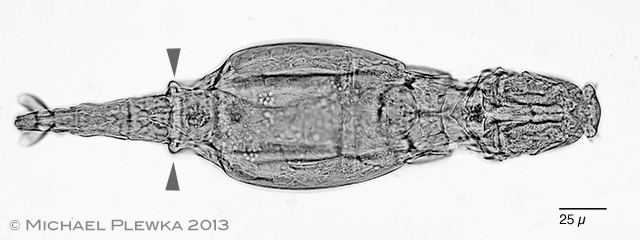 |
| Silhouettes (created with Adobe Photoshop) showing two specimens of different groups of Adineta occuring in the same habitat. Upper: A. barbata; lower: Adineta steineri (24.2.2013). A. steineri has a bolster on 1st rump segment, A. barbata does not. See also the differences in the rostrum shape! |
|
|
|
| |
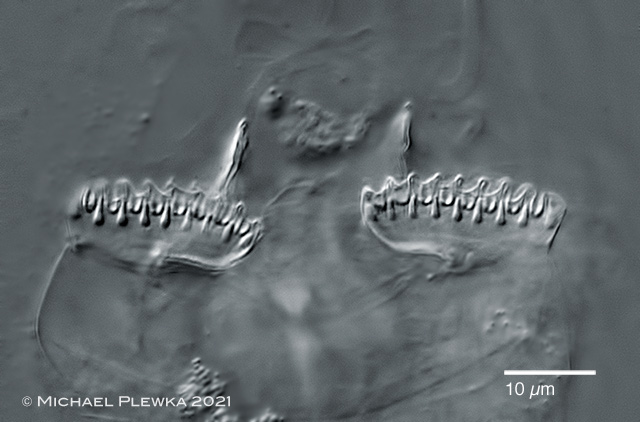 |
| Adineta barbata: detail of the rake apparatus of specimen macerated with SDS; number of U-hooks(NoUH): 8/8. (5) |
| |
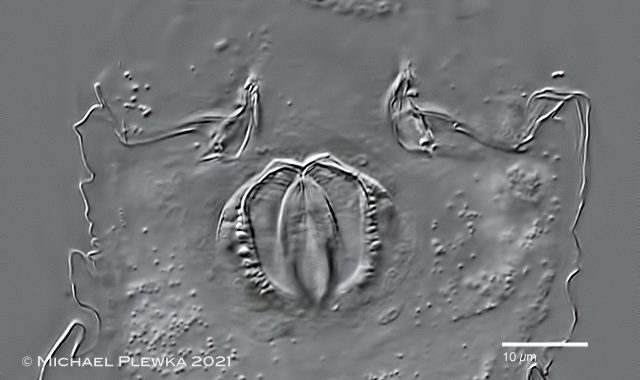 |
| Adineta barbata: same specimen; macerated with SDS. This image demonstartes that the basal plate of the rake apparatus is connected to the integument of the rotifer. (5) |
| |
| Collection of samples (5) by courtesy of Pit Staedler, Gevelsberg. |
| |
| Location: Gevelsberg, school campus, oak tree (2); Nature reserve Bourtang (3); Schlanders, South Tirol, Italy(5); Hattingen Oberstüter, NRW, Germany, (Tiede´s) forest (6) |
| Habitat: Algae and moss on bark; moss (2); Sphagum sample (3); dry moss (5); (6) |
| Date: 31.3.2006/ 29.10. 2008 (2); 11.11.2012 (3); 24.02.2013 (4); 16.01.2021 (5); 28.01.2021 (6) |
| |
| Identification by courtesy of Nataliia Iakovenko, University of Ostrava, Czech republic |